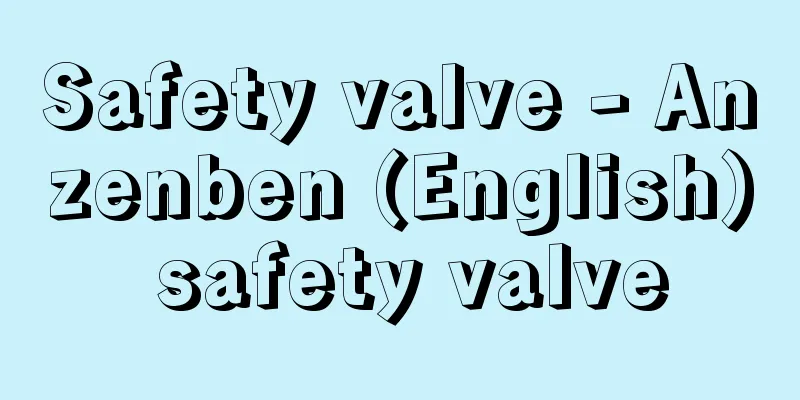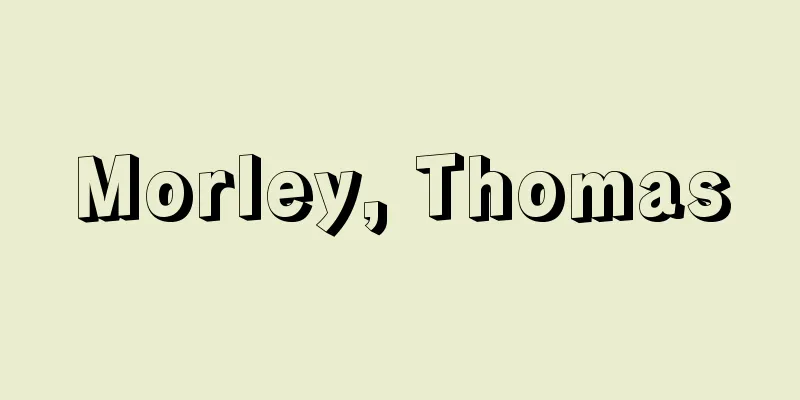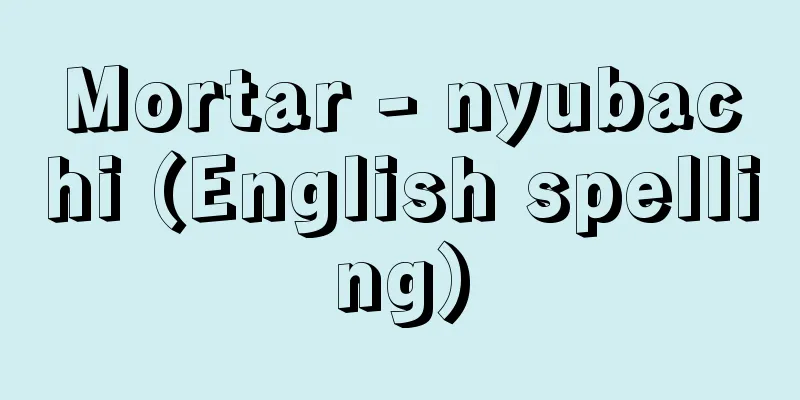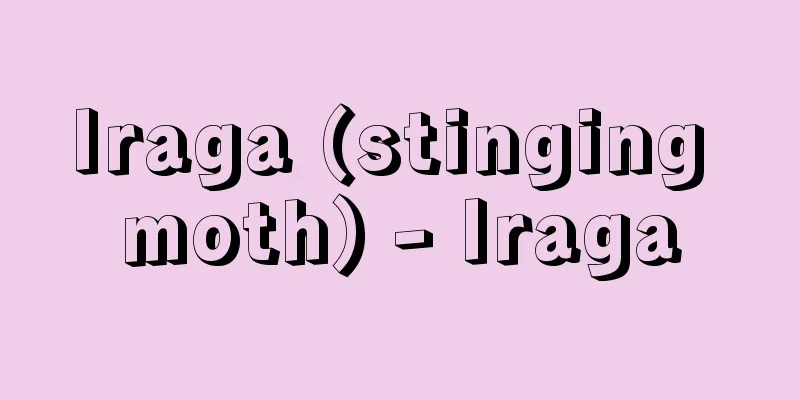Apraxia - Apraxia

|
This refers to a state in which a person is unable to perform an action for a purpose that has been acquired through experience or learning, even though the person is able to move and correctly recognizes what action to perform. It is assumed that the condition cannot be explained by motor paralysis, involuntary movement, ataxia, sensory impairment, or mental symptoms. Steinthal, P. (1871) first named cases in which the person had difficulty using objects apraxia, and Liepmann, H. classified it into three types in the early 20th century: segmental motor apraxia, ideomotor apraxia, and ideational apraxia. Since then, the concepts of these three terms have changed, and even today there are some differences in usage among researchers. Although they do not fall under the definition of apraxia mentioned above, the terms apraxia of dressing and constructional apraxia are also used. Limb-kinetic apraxia: Motor clumsiness. There is no paralysis or the paralysis is very mild, but skilled actions such as buttoning clothes are impaired. It appears on the contralateral side when the lesion involves the precentral or postcentral gyrus. Ideomotor apraxia: A state in which meaningful gestures are possible in natural situations but cannot be performed intentionally. Liebmann (1920) included gestures using verbal commands, imitation, or the use of objects, while Geschwind, N. (1965) limited it to verbal commands, and Yamadori Shigeru (1984) excluded object-using actions. On the other hand, DeRenzi, E. et al. (1980) also included impaired visual imitation of meaningless actions. Regardless of the definition, conventional gestures such as saying "bye-bye" or gestures using tools without holding them are impaired, resulting in incorrect movements (parapraxis) or incomprehensible movements. There is a strong association with left parietal lobe lesions. Ideational apraxia is defined as a disorder of a series of actions that require complex movements (Liepmann, 1920), a disorder of serial actions using multiple objects (Poeck, K., 1980), and a disorder of object manipulation (Morlaás, J., 1928). In all cases, the patient is unable to perform a meaningful action using a tool, such as "pouring tea in a teapot." Imitation of the action is often possible, and individual elementary movements can be performed with almost accuracy. Tool use involves many processes, such as recalling semantic memories related to the tool, integrating visual-spatial recognition of the object with the movement, and sequencing the movement, and the disorders involved are diverse. Buccal-lingual-facial apraxia A condition in which habitual movements of the mouth, tongue, and face cannot be performed intentionally. Although whistling and coughing are possible in natural situations, they cannot be performed by verbal commands or imitation. Although it often occurs together with apraxia of speech, they are independent symptoms. It is associated with lesions in the inferior precentral gyrus. Dressing apraxia is a condition in which the patient is unable to dress intentionally even in natural circumstances. The patient is confused because they are unable to tell which way is up and down, left and right, and do not know which part of the body should go through which part of the clothing. In order to dress, the patient needs to grasp the spatial relationship between the deformable object of clothing and the patient's own body, and link this to a sequential action. Therefore, dressing apraxia is strongly related to disorders of complex visuospatial cognition, including the patient's own body, and is associated with right parietal lobe lesions. Constructional Apraxia A condition in which one is unable to form a coherent shape. Imitation of two-dimensional and three-dimensional shapes using sticks or building blocks, copying and spontaneous drawing of shapes, and imitation of shapes made with one's fingers are impaired. It is closely related to visual-spatial cognitive disorders and occurs with lesions in the parietal lobe, but qualitative differences in symptoms have been reported between lesions on the left and right sides. → Agnosia [Masako Suzuki] Latest Sources Psychology Encyclopedia Latest Psychology Encyclopedia About Information |
|
運動が可能であり,どのような行為を行なうべきかを正しく認識できているにもかかわらず,経験・学習により習得された目的のための行為ができない状態を指す。運動麻痺,不随意運動,失調,感覚障害,精神症状などでは説明できないことを前提とする。シュタインタールSteinthal,P.(1871)が物品使用の困難な症例をapraxiaと命名したのが初めであるが,リープマンLiepmann,H.が20世紀初頭に肢節運動性失行,観念運動性失行,観念性失行の三つに分類した。その後,この三つの用語の概念には変遷があり,現在でも研究者間で用法に多少の相違がある。前述の失行の定義からは外れるが,着衣失行,構成失行の語も使われている。 肢節運動性失行limb-kinetic apraxia 運動拙劣症。麻痺はないか,麻痺があっても非常に軽いのに,ボタンを掛けるなどの熟練した行為が拙劣化している。中心前回・中心後回を含む病巣で対側に出現する。 観念運動性失行ideomotor apraxia 意味のある身振りが自然な状況では可能であるが,意図的に実現できない状態。リープマン(1920)は言語命令,模倣,物品使用のいずれによるものも含めたが,ゲシュビントGeschwind,N.(1965)は言語命令によるものに限定し,山鳥重(1984)は物品使用動作を除いている。一方,ディ・レンツィDeRenzi,E.ら(1980)は無意味動作の視覚的模倣障害も含めている。いずれの定義にせよ,バイバイなどの慣習的な身振りや道具を持たずに道具を使うジェスチャーをすることが障害され,違う運動が出たり(失錯行為parapraxis),了解不能な動きになったりする。左頭頂葉病巣との関連が強い。 観念性失行ideational apraxia 複雑な運動が必要な一連の行為の障害(Liepmann,1920),複数の客体を用いる系列動作の障害(Poeck,K.,1980),客体操作の障害(Morlaás,J.,1928)などの定義がある。いずれも「急須でお茶を注ぐ」ような道具を用いた意味のある行為ができなくなる。行為の模倣は可能なことが多く,個々の要素的な運動はほぼ正確に行なえる。道具使用には道具に関する意味記憶の想起,客体の視空間認知と運動の統合,運動の系列化など多くの過程が含まれ,その障害も多様である。 口舌顔面失行buccal-lingual-facial apraxia 口部・舌・顔面の習慣的運動が意図的にできない状態。自然な状況では口笛や咳などが可能であるにもかかわらず,言語命令や模倣による遂行ができない。失構音(発語失行)の合併は多いが,相互に独立した症候である。中心前回下部病巣が関連する。 着衣失行dressing apraxia 自然な状況でも意図的に衣類を着ることができない状態。衣類の上下左右がわからず,また衣類のどの部分にどの身体部位を通したらいいかわからず困惑する。着衣のためには,衣類という変形する客体と自己身体の空間関係を把握し,それを系列的な行為に結びつける必要がある。したがって,着衣失行は自己身体を含む複雑な視空間認知の障害との関連が強く,右頭頂葉病巣に関連する。 構成失行constructional apraxia まとまりのある形態を形成することができない状態。棒や積み木などによる2次元・3次元形態の模倣,図形の模写や自発描画,手指で作る形の模倣などが障害される。視空間認知障害と密接に関連し頭頂葉病巣で生じるが,左右の病巣間で症状に質的な差異が報告されている。 →失認 〔鈴木 匡子〕 出典 最新 心理学事典最新 心理学事典について 情報 |
<<: Objection to execution/Appeal against execution
>>: Forfeiture clause - Shikken Yakkan
Recommend
Kudzu Chang Geng - Kudzu
…A Taoist priest from the Southern Song Dynasty i...
The University of Tokyo
A national university corporation. Founded on Apr...
Busoni
Italian composer and pianist. Both parents were mu...
Sarmatians
A nomadic horse-riding people of Iranian origin wh...
Gallstones - GAPPEI TANSEKI
...Depending on their components, they are called...
Heptacarpus geniculatus
This shrimp belongs to the Crustacean family, Poma...
"Ise Sadachika's Lessons" - Ise Sadachika Kyokun
…Sadachika was skilled in waka poetry, linked poe...
Kakitsu Rebellion
This refers to the incident that occurred on June...
Tanna Island
A volcanic island in the southwest Pacific Ocean, ...
Anti-Rightist Struggle - Fan-you-pai touzheng
An ideological and political struggle against so-c...
confederation nacional de trabajo (English notation) confederation nacional de trabajo
…The founding of the Second International in 1889...
Day Tree
Year of death: May 19, 1631 (June 18, 1631) Year o...
zero population growth
...However, when measuring such standard indicato...
Bahnar
…(1) A general term for the mountain minority gro...
"Wasteland Poetry Collection" - Arachi Shishu
...6 volumes in total. Modernist poets who had ex...


![Ohito [town] - Ohito](/upload/images/67cb17f834f40.webp)






![Quebec [province] - Quebec](/upload/images/67cb7c9cb83db.webp)